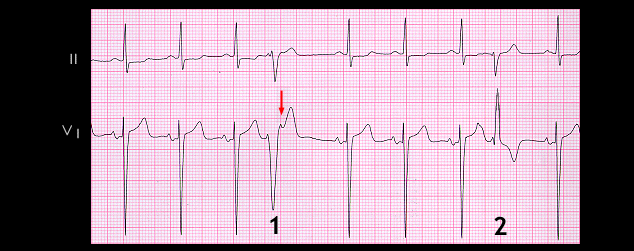
Now look at the premature QRS complex labeled #1. There is no obvious premature P wave before it and the preceding T wave is identical to its predecessors. Thus, it is highly unlikely that a premature P wave is buried within this T wave. There is, however, a deflection at the end of the premature QRS complex (arrow) and the intervals between this deflection and both the preceding and following P waves are identical and the same as the PP intervals of the other sinus beats. This indicates that the deflection marked with the arrow is a normally occurring sinus P wave. It does not conduct to the ventricles because the AV conducting system and/or the ventricular myocardium, having just been excited by the premature beat, is/are still refractory.
